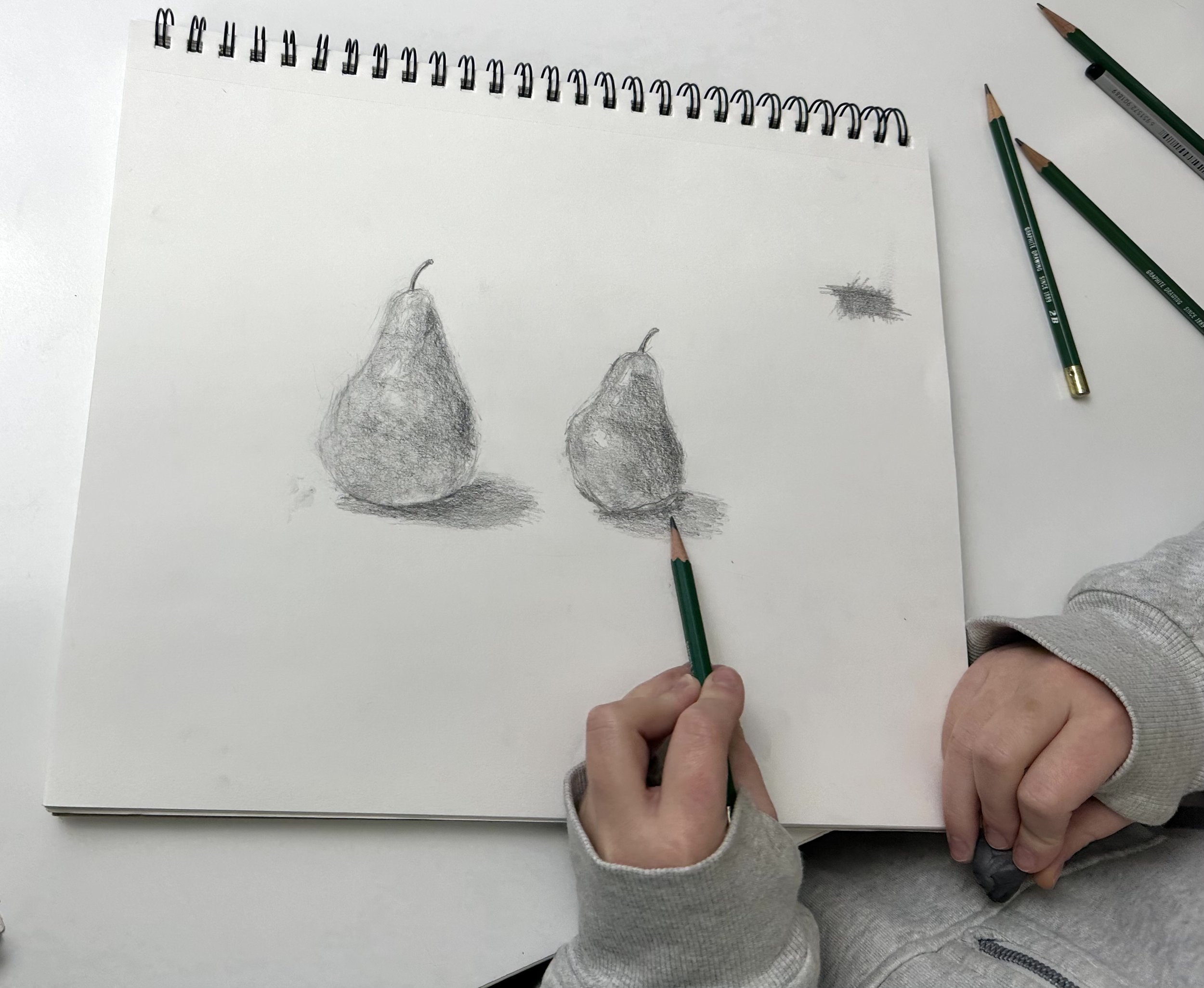
Overthinking Could Suffocate Your Drawing Practice
Nike said it best: Just Do It. Overthinking your drawing process slows progress and stifles creativity. Drawing is about connecting your hands, eyes, and brain—not overanalyzing every line.
Studies show that interrupting your brain’s overactive thought process can boost creativity and memory. Yet, adults often hesitate, fearing mistakes. But mistakes are how we grow!
The key? Let go of perfection. Play, fail, and draw without judgment. Grab a pencil and start—because the only thing holding you back is your own overthinking.
Ready to unlock your potential? Start today!

Art Supplies for the Budding Artist
Still looking for holiday presents for your favorite budding artist? These are the essential drawing art supplies I can't live without! Many of these are on my newly updated Recommended Supplies list, however, some of these are not because they go beyond my basic supplies for drawing lessons. Nothing beats the gift of art supplies, because it is the gift of an experience- something that will reward the receiver for much longer than just the holiday season, and will give your favorite person a learned skill that lasts. Here are my most coveted tools, with links to easy online suppliers.

Your Kids Can Draw the Same Things as a College Art Student!
Did you know your 7-year-old can learn to draw just like a college art student? At LZM Studio, I bring my 5 years of teaching experience in community colleges and universities to private lessons for kids as young as 7. For over 8 years, I’ve proven that children are capable of mastering advanced drawing concepts like shading, perspective, and understanding how light interacts with shapes.
Take Ella, for example. At just 7 years old, she confidently tackled drawing a cone with realistic shading after seeing similar work by an adult student. Her excitement and determination proved that even at a young age, kids can grasp complex concepts when they're ready. While younger children often draw to express themselves and process their experiences, my lessons introduce advanced skills step by step, ensuring they learn at their own pace.
Your child’s creativity has no limits, and I’m here to nurture their artistic journey with professional guidance. Book a lesson today and watch their confidence soar!

Drawing Games for Kids: Rewards for Hard Work
Discover how structured drawing classes can embrace kids' natural creativity while teaching rigorous skills! Incorporating fun, imaginative activities like the Creative Mark Game helps children stay engaged, build motor skills, and explore their inner worlds. Learn how to structure 55-minute drawing sessions with breaks that balance focus and play, offering a reward system that motivates kids to learn while having fun.
Perfect for children ages 5–10, these techniques make learning to draw exciting and adaptable—even during moments of silliness. Whether in a class, waiting in line, or at home, simple games like transforming marks into imaginative creations are great for keeping kids entertained and creative. Check out this post for inspiration and examples from young artists aged 7, 9, and 10!

In Honor of Veterans Day, LZM Studio and Small Victories Foundation Offer Drawing Lessons for Veterans
This Veterans Day, help spread the word about an incredible scholarship opportunity for veterans! Through my partnership with Small Victories, I’m offering drawing lessons to students recovering from traumatic brain injuries. Small Victories, founded by Derrick and Cindy Wright, is an inspiring organization that empowers individuals like Derrick, a veteran who sustained a brain injury while serving in Iraq, to find healing and purpose through art.
Art can be a powerful tool for recovery, fostering community, and achieving meaningful milestones. I’m honored to contribute to this mission and invite you to join us in supporting their work. Learn more about Derrick’s journey, explore the scholarship opportunities at LZM Studio, and consider donating to help veterans rediscover hope and purpose through creativity.
Share this with the veterans in your life and thank them for their service!

One Small Reason You Want Me to Teach Your Kids How to Draw
My personalized drawing lessons go beyond art, creating a space where kids grow creatively and personally. I’m honored to be part of my students' “local family,” guiding them as they achieve milestones, like Phoebe’s conservation patch for the Austin Zoo.
Each week, I become more than a teacher—I’m a trusted confidante and ally, fostering creativity and building meaningful connections. From celebrating achievements to sharing life lessons, I’m here to inspire young minds while supporting both kids and parents. Choose drawing lessons where your child can learn, grow, and thrive!

Digital Kids: Computer-Aided Drawing is Good Drawing Practice
Encouraging kids to unplug is important, but guiding them toward meaningful tech use is just as valuable! Digital drawing, like Ananda's work with Corel programs, combines creativity with real-world skill-building. While traditional tools like colored pencils teach tactile skills and planning, digital mediums offer layers, "undo" options, and career-ready experiences.
Ananda's "Phoenix Fox" speed-drawing project, learned at The Contemporary Austin Art School, highlights how digital tools can expand artistic expression. If your kids are using computers, why not connect with them through creative activities like digital art?

Sophisticated Graphite Pencil Portraits, for Kids and Adults!
Many believe kids can’t draw as well as adults, but with the right guidance, they can! Children like Ellie, age 11, can create impressive portraits with time and practice. Ellie’s portrait took over five hours to complete, showing how patience and focus help kids develop their skills.
Drawing Tips for Kids:
Spend More Time Drawing – Encourage kids to take their time and observe details. Use a timer to gradually increase drawing time for better results.
Focus on the Face Shape and Features – Pay attention to the spaces between facial features. Shading areas like the nose, cheeks, and forehead adds realism to the portrait.
With practice and persistence, kids can improve their drawing skills and create amazing portraits!
